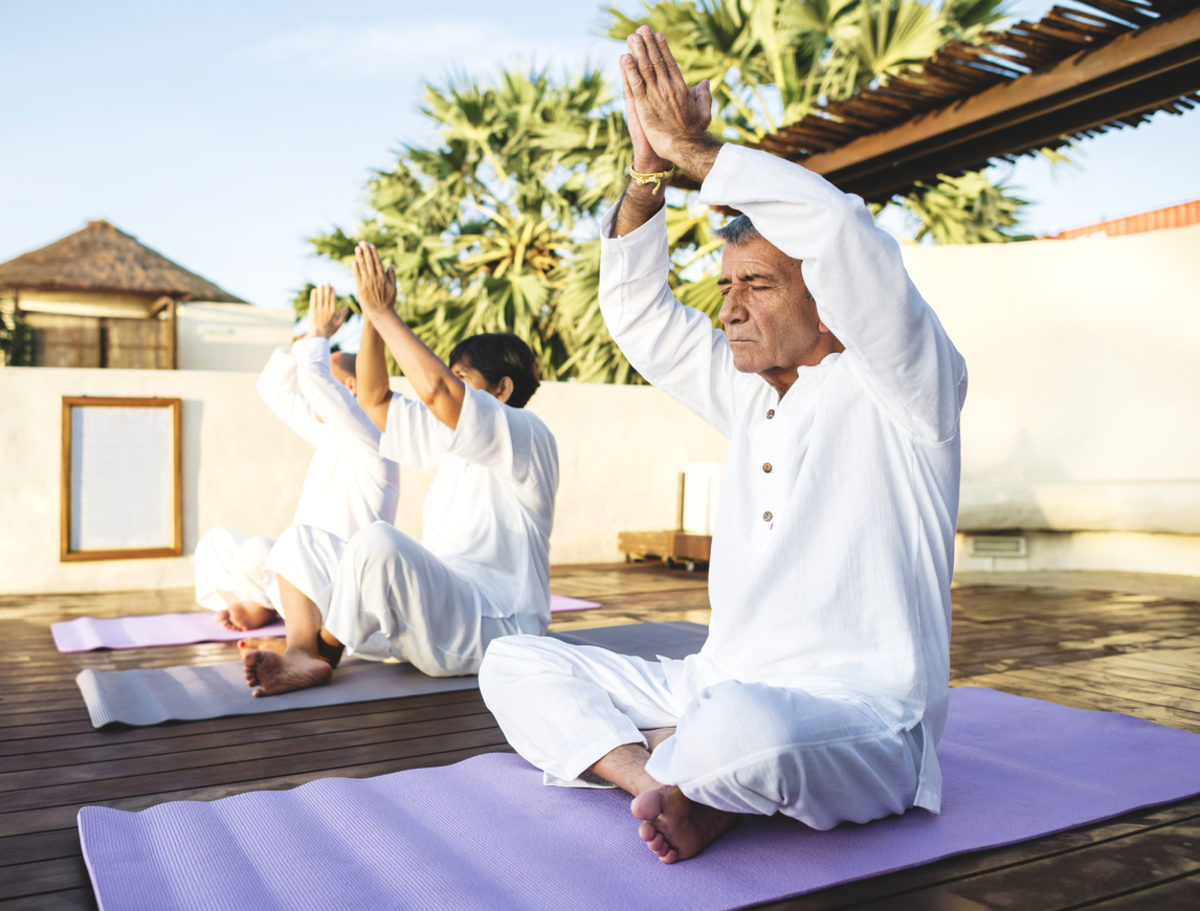Stress is a known but little-discussed risk factor for heart disease. Not only does stress alter your blood pressure, it can induce a whole lot of different unhealthy eating and sleeping habits, which can increase the risk of obesity, diabetes, smoking, drinking alcohol, or using drugs, all of which put you at risk of a heart attack.

What relaxation techniques may help you recover faster and live a healthier, as well as happier, life?
1. Deep breathing
Breathing exercises are a great relaxation technique because they help your mind focus on something that’s completely under your control. The moment you feel stressed, your entire body experiences a tension that puts a strain on the heart.
Deep breathing exercises are simple and efficient. Pick a quiet room in your home and make sure you won’t be disturbed. You can either sit or lie down, depending on which position you find more comfortable at the time. Inhale through your nose with your mouth closed until you count to three. Then, breathe out through your nose. Repeat the process until you notice the tension in your muscles unwind.
2. Visualization
Visualization is another relaxation technique that has to be performed in silence, so make sure you pick a spot where you won’t be disturbed. The visualization exercise is designed to help you disconnect from current reality and troubles, and looks to incorporate as many of your senses as possible.
As the name suggests, visualization is about creating mental images that can help you relax, and that you can go back to whenever you feel stress is taking over. During this exercise, you can think of whatever soothes you, whether it’s the ocean waves hitting the rocks on the shore or a forest in the middle of a storm.
Close your eyes and concentrate on your breathing, trying to picture a scenery that you’re comfortable with. Picture yourself being in that spot, in the present, and enjoying every moment of it. To include other senses, try to picture everything in the smallest of details. Your mind should actually hear the raindrops or the waves crashing as they meet the shore. The exercise incorporates deep breathing, but also elements like yoga, aromatherapy, music, and mediation.
3. Meditation
Meditation is a very broad concept, and trying to talk about it, in general, is like trying to cover the topic of sports. There are many different types of meditation, each of them looking to cover a different aspect of the body and the mind.
For example, there’s concentration meditation, in which you focus on a single point (which can be a word, a sound, an object, or a mantra). This can make you feel more grounded whenever you feel your mind is wandering towards the heart attack or some other stress trigger.
Mindfulness meditation deserves an entire article all on its own, because it is just a complex topic that can help people control how they react to stressful events. Through mindfulness, people train their minds to let go of judgment and to cope with both pleasant and unpleasant experiences. People who have been practicing mindfulness for a long time are able to concentrate better, have higher pain thresholds, and are more disciplined and prepared for whatever lies ahead.
4. Progressive muscle relaxation
With the help of this relaxation technique, you can gain control over groups of muscles that you need to unwind and relieve stress. Progressive muscle relaxation can help people reduce stress and anxiety, but also relieve different forms of chronic pain.
Progressive muscle relaxation has often been used by practitioners in combination with recovery processes to reduce pain caused by conditions such as high blood pressure or headaches. Experts suggest that the method is far more efficient when you work on muscle relaxation in a specific order, typically starting from the lower body and working your way up to your chest.
Through focus and discipline, you can practice tensing and relaxing different muscle groups:
- Inhale while contracting one of your muscle groups between five and 10 seconds.
- Exhale and release the tension in those muscles while you do.
- Relax for about 20 seconds, then repeat the inhale/exhale process, but focus your attention on another muscle group.
- It can help if you focus on a certain image. A lot of people like to visualize how stress leaves the body while they’re relaxing.
Conclusion
Relaxation techniques can help people cope with stress, which helps them recover faster after a heart attack. What's more, by reducing your stress, you can also reduce your risk of another heart attack.
It’s perfectly normal for relaxation techniques not to do wonders the first time you try them — they takes practice to master them but once you do, you will have trained your mind to detach from present stressful events, allowing you to concentrate on the positives and let go of whatever stress triggers might be bothering you at the time. Thankfully, there are plenty of relaxation techniques that you can try, so if you feel like one of them isn’t working out for you, feel free to try another one.
- Photo courtesy of SteadyHealth


Your thoughts on this